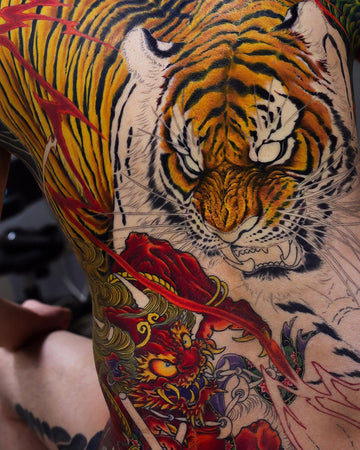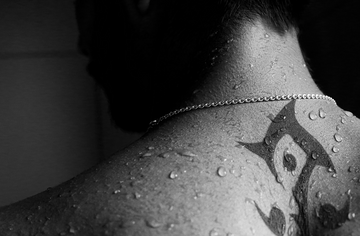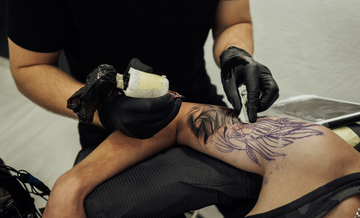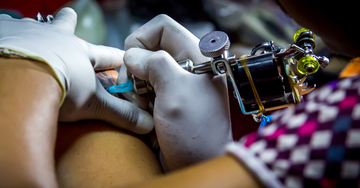Japanese back tattoos, rooted in the ancient art of Irezumi, are among the most intricate and meaningful tattoo designs in the world. Evolving since the Edo period, these tattoos combine artistry, culture, and symbolism, making them ideal for those seeking a visually stunning and deeply significant tattoo.
While historically linked to rebellious outlaws and mythological heroes, Japanese back tattoos have now gained recognition as a form of traditional Japanese art—a reflection of spirituality, storytelling, and strength. From fierce dragons and tigers to serene cherry blossoms, Japanese back tattoos offer limitless options for personal expression.
In this blog, we’ll guide you through some of the most popular designs, their meanings, and the artistry behind Japanese back tattoos.
The History and Meaning of Japanese Back Tattoos
Japanese tattoos, or Irezumi, became popular during the Edo period (1603–1868). Inspired by Chinese tales like the "Water Margin" (Suikoden), colorful tattoos symbolized the bravery and strength of the story's heroes. Over time, they became associated with both masculinity and artistic expression.
However, during the Meiji period, tattoos were outlawed as symbols of rebellion and crime, further embedding the cultural perception of tattoos as something bold and defiant. Today, Japanese back tattoos represent a blend of tradition, personal growth, and artistic evolution.
Key Features of Japanese Back Tattoos
Japanese back tattoos are characterized by several unique techniques and elements:
- Bold Outlines: Strong, defined lines that frame the design.
- Shading (Bokashi): Gradients that add depth, detail, and visual flow to the tattoo.
- Backgrounds (Gaku): Elements like waves, clouds, flames, and wind that tie the entire piece together.
- Color Symbolism: Each hue carries a distinct meaning—for example, red for passion and strength, black for power and mystery.
These features ensure that Japanese back tattoos look cohesive and dramatic across such a large canvas.
Popular Japanese Back Tattoo Designs and Meanings
1. Dragons (Ryu)

Dragons symbolize wisdom, protection, and strength in Japanese culture. Unlike their Western counterparts, Japanese dragons are benevolent and spiritual, often depicted amidst clouds or waves to represent their heavenly nature.
A dragon covering the back emphasizes power and resilience, often extending across the shoulders and arms for a more dynamic design.
2. Tigers (Tora)

Tigers are a symbol of courage, ferocity, and protection. They are believed to ward off evil spirits and represent physical strength. In traditional Japanese art, tigers are often paired with dragons to depict the balance of physical and spiritual power.
A back tattoo featuring a tiger in motion, surrounded by wind or waves, creates a sense of vitality and energy.
3. Phoenix (Hou-ou)

The phoenix, a mythical bird that rises from the ashes, represents rebirth, immortality, and renewal. Its vibrant, multicolored feathers make it a striking centerpiece for a full-back tattoo. The phoenix is often chosen by those who have overcome adversity and want a symbol of resilience and triumph.
4. Koi Fish (Nobori Koi)

Koi fish tattoos are a representation of perseverance, success, and determination. According to Japanese folklore, a koi fish that swims upstream and overcomes great challenges transforms into a dragon—symbolizing strength and achievement.
The koi tattoo is perfect for a back design, as it can be illustrated swimming across the back with flowing water or waves for dramatic effect.
5. Turtle(Kame)

The turtle is a powerful symbol in Japanese culture, representing immortality and longevity. This meaning comes from the well-known proverb, “Turtles live for a thousand years” (Kame wa sen nen), which highlights the creature's association with an eternal lifespan.
In traditional Japanese Irezumi, turtles are often depicted in a serene and dignified manner, embodying stability and resilience. Beyond this, turtles are also tied to Chinese mythology, where they form the basis of the Black Tortoise (Genbu), one of the *Four Symbols of Chinese Mythology.
The Black Tortoise, or Reiki in Japanese, is commonly portrayed with a snake wrapped around its body or tail, symbolizing a union of earth and water, as well as balance and cosmic harmony. For those seeking peace, protection, and enduring life, a turtle tattoo makes an ideal choice.
Tattoo inspiration: Turtles are often surrounded by waves, clouds, or paired with other mythological elements like snakes for added depth.
6. Snake (Hebi)

The snake holds deep spiritual and cultural significance in Japanese Irezumi, representing rebirth, eternal life, and transformation due to its ability to shed its skin. This cyclical renewal connects the snake to concepts of immortality and regeneration.
Historically, snakes have been revered in Japan and are deeply rooted in folklore and mythology. One of the most famous legends is the story of Yamata no Orochi, an eight-headed serpent. As recounted in the Kojiki (Records of Ancient Matters), Yamata no Orochi terrorized villages by devouring young maidens. It was ultimately slain by the brave god Susanoo-no-Mikoto, a tale symbolizing the triumph of good over evil.
In Japanese tattoos, snakes often signify protection from harm, spiritual renewal, and the raw power of nature. Their sinuous, flowing forms make them ideal for large-scale back or arm designs, often paired with other elements like peonies, clouds, or dragons.
Tattoo inspiration: A coiled snake surrounded by flames or twisting through vibrant floral motifs creates a striking and meaningful design, symbolizing resilience and eternal strength.
6. Cherry Blossoms (Sakura)

Cherry blossoms are a beloved symbol in Japanese culture, representing the fragility of life and the beauty of fleeting moments. Paired with other elements like dragons or samurai, sakura designs add an elegant and poetic touch to back tattoos.
7. Wind and Wave Patterns

These natural elements are often used as backgrounds in Japanese tattoos to create movement and balance. Waves represent strength and endurance, while wind patterns add flow and harmony to the overall design.
The Cost of a Japanese Back Tattoo
Japanese back tattoos require a significant commitment in terms of both time and cost. Since they often cover the entire back, these designs typically involve multiple sessions and can take anywhere from 30–60 hours depending on the details and artist's style.
The cost is usually calculated by hourly rate, with prices ranging from ¥10,000–¥20,000 ($80–$150 USD) per hour. Here's an estimated breakdown:
| Tattoo Size | Time Required | Estimated Cost |
|---|---|---|
| Partial Back | 20–30 hours | $1,500–$3,000 USD |
| Full Back (Bokashi) | 40–60 hours | $3,000–$6,000+ USD |
Factors like design complexity, shading, and additional elements (like extending onto the shoulders or arms) will affect the price.
Japanese back tattoos are a timeless form of artistry that combine tradition, symbolism, and personal storytelling. Whether you choose a fierce dragon, a graceful phoenix, or a poetic cherry blossom, your back tattoo can reflect your inner strength, resilience, and beauty.
As with all tattoos, take time to research and work with an experienced artist who understands the rich tradition of Irezumi. Your Japanese back tattoo will not only be a visual masterpiece but a lifelong expression of your journey and identity.





